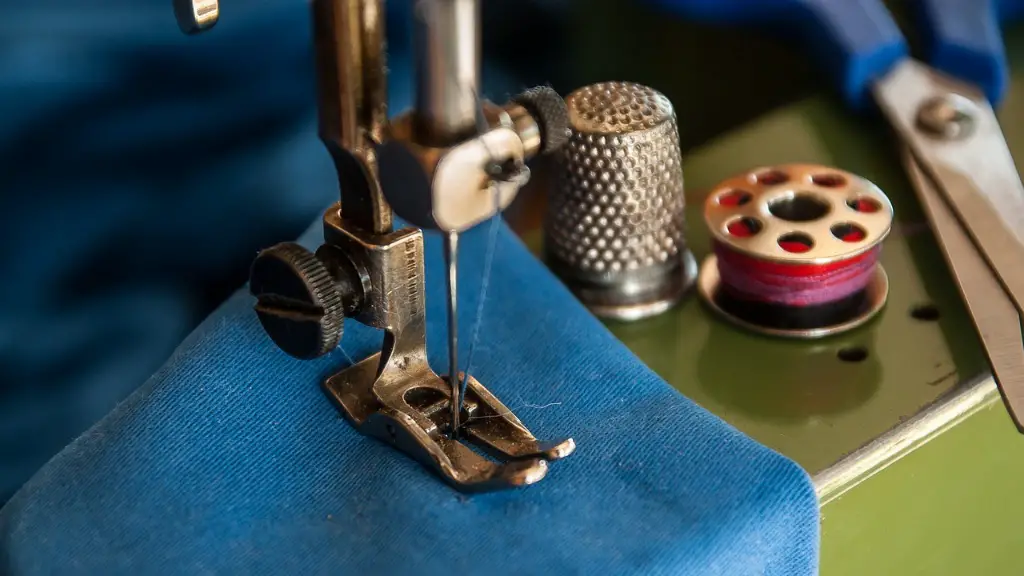For many household tasks, Singer Heavy Duty Sewing Machines have been and still are the go-to choice. Powerful and reliable, it is a brand that has been trusted for many decades. However, with the nature of its many parts and components, extra attention must be given to regular maintenance and cleaning to ensure long life and peak performance. Here, we provide some tips for those eager to get their Singer Heavy Duty Sewing Machines cleaned and shining.
The first priority is to always clear the machine of any thread pieces. Many Singer Heavy Duty models come with a lint brush that can be used to remove any dust, lint and poorly cut threads from the machine. This should also be done to the needle plate, ensuring all components are free of the above elements. If desired, there are also particular tools dedicated to this task.
The next step is to use compressed air, pressurized cans of which can be found in any store. This is a safe, effective way of removing any lint or dust from difficult-to-reach parts such as between the gears. Again, a lint brush can be used to ensure all components are dust-free. However, it is important to ensure the compressed air does not come in direct contact with any plastic or painted surfaces, as this could lead to damage.
For those willing to go that extra mile, the exterior of the machine can also be wiped with water and mild dish soap. Alternatively, rubbing alcohol and a soft cloth can be used. Keep in mind that, in no way should any locks, needles or other moving parts be touched, as doing so would be damaging.
When finished with the above steps, the machine can then be lubricated and tuned. Oil should be periodically renewed using small drops positioned on the moving parts. After doing so, the machine should always be run at low speed for several minutes in order to distribute the oil.
Finally, when all steps are completed, it is also recommended to cover the machine with a cloth cover or bag and store it in a cool, dry location. This is essential if one wishes to preserve their machine and keep it in top-notch conditions.
Preventative Maintenance
As the old saying goes: “An ounce of prevention is worth a pound of cure”. Taking some simple measures will go a long way in ensuring a longer life-span for the Singer Heavy Duty Sewing Machine. Here are some tips that are straightforward yet practical.
Change the needle regularly. This is applicable to any sewing machine, as dull needles lead to unequal stitches, thread breakage and poor fabric handling. Another measure is to use bobbins and needles that are suitable for the type of project being undertaken. Additionally, make sure that all accessories are the correct type for the machine.
Clean the machine regularly. As with all machinery, dust accumulation should be avoided whenever possible. This could have adverse effects on machinery performance and should therefore be avoided. Also, inspect the machine for any potential issues such as snags, loose screws and malfunctioning parts, as these can be easily avoided if payed attention to.
Finally, ensure to only use approved accessories. Third-party accessories can be cheaper, but are often unreliable and can damage your machine.
Extending the Life of a Machine
In order to guarantee a longer machine life, a few tips may help in this endeavour. Firstly, the machine should be regularly checked for any signs of wear and tear, as this often goes unnoticed until severe damage is done. In this same vein, regular maintenance is also key to preserving the life of a machine.
Machines should also be handled with care, as any strong vibrations or impacts could damage internal components and cause irreparable harm. Finally, it is important to note that the machine should never be left on for long periods of time, as this could have negative effects on the motor, for instance.
Knowing the Machine
For many fresh users, the process of cleaning and maintaining the Singer Heavy Duty Sewing Machine can seem daunting. However, with a basic understanding of its parts and functionality, the cleaning process can be made simpler. First and foremost, physical components such as oil caps, velocity controls and power cords must be addressed.
Subsequently, the machine should be unlocked and opened, as this allows for a full display of its components and parts. As certain elements of the machine may be unknown to the operator, it is recommended to consult the owner’s manual which should come with the machine. This document not only includes the names of all its parts, but also how this affects the machine’s performance.
Cleaning Tools Needed
Though this process may require some tools, these are often quite accessible and easy to find. The lint brush is the most easily found and can be found in various hardware stores. Different types of compressed air, however, can also be sourced from these locations. However, the oil needed for lubrication is the most essential of all and should only be used sparingly.
In order to ensure no damage is done to the moving parts of the machine, screwdrivers and wrenches must also be sourced. These ensure a safe and precise adjustment of the machine in order to maximize its potential. Finally, some cleaning cloths are essential when wiping the exterior of the machine.




